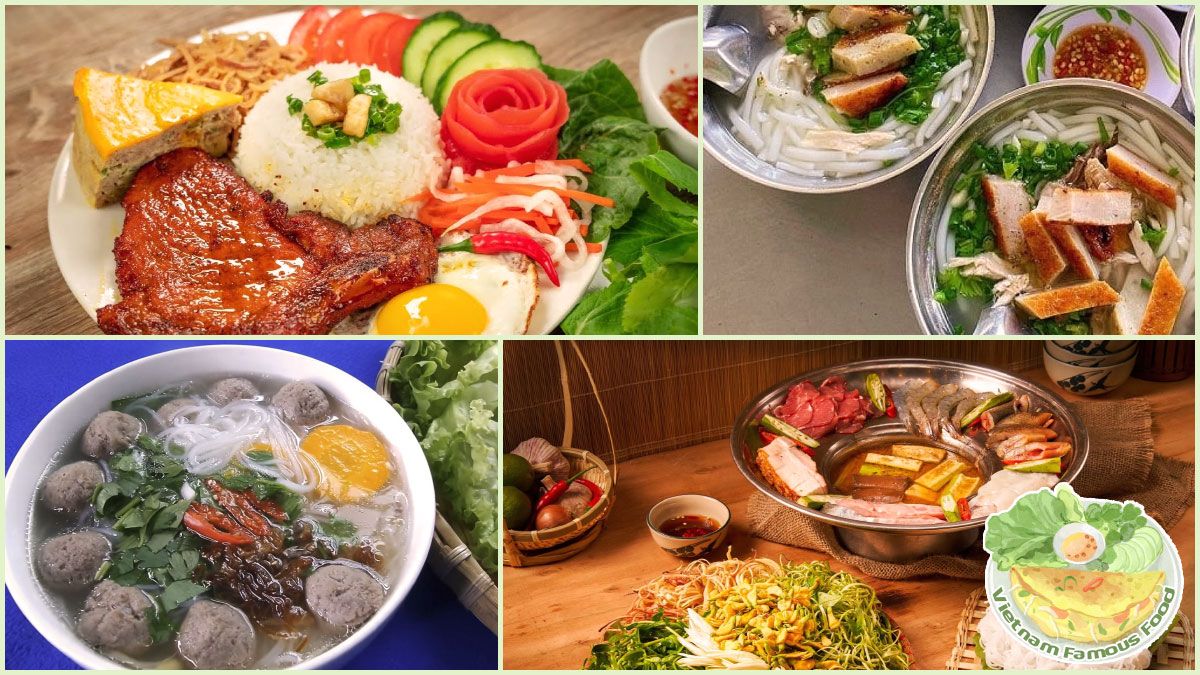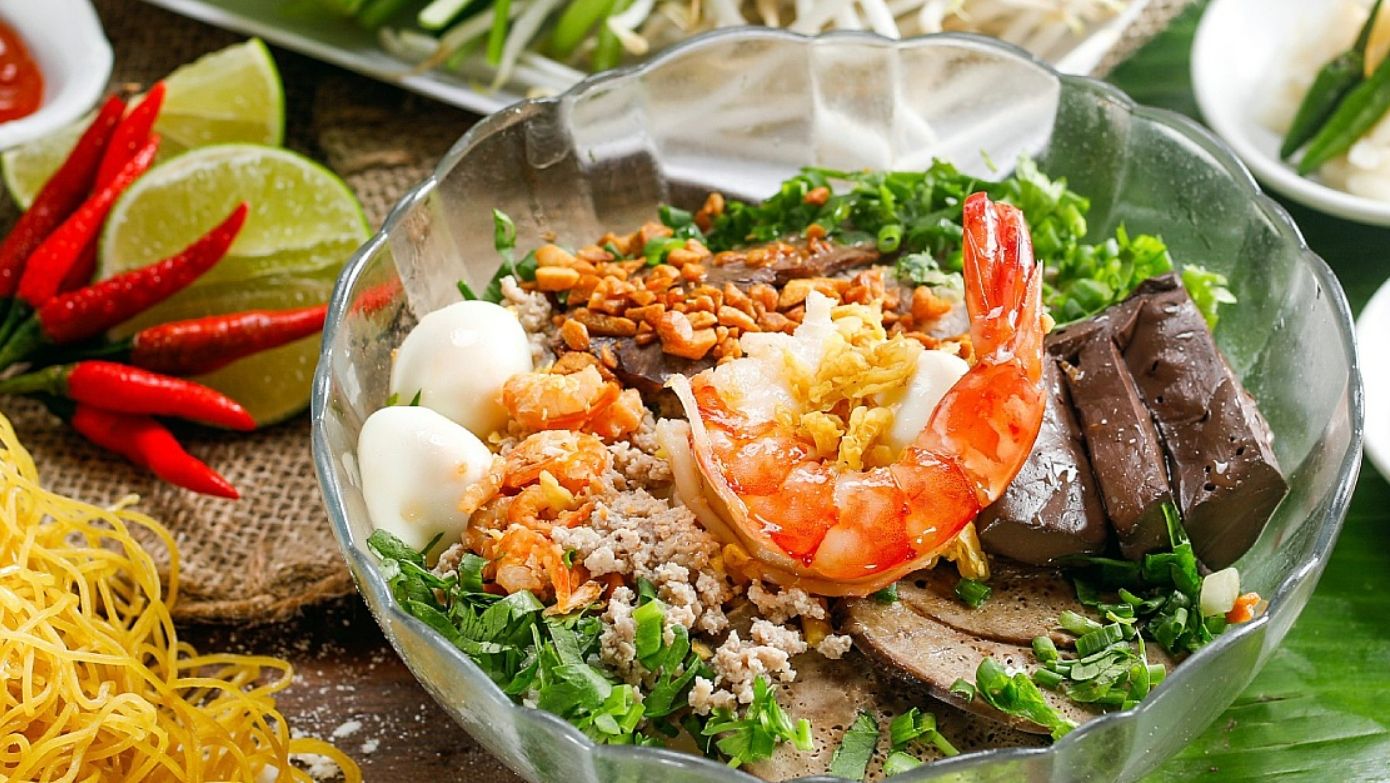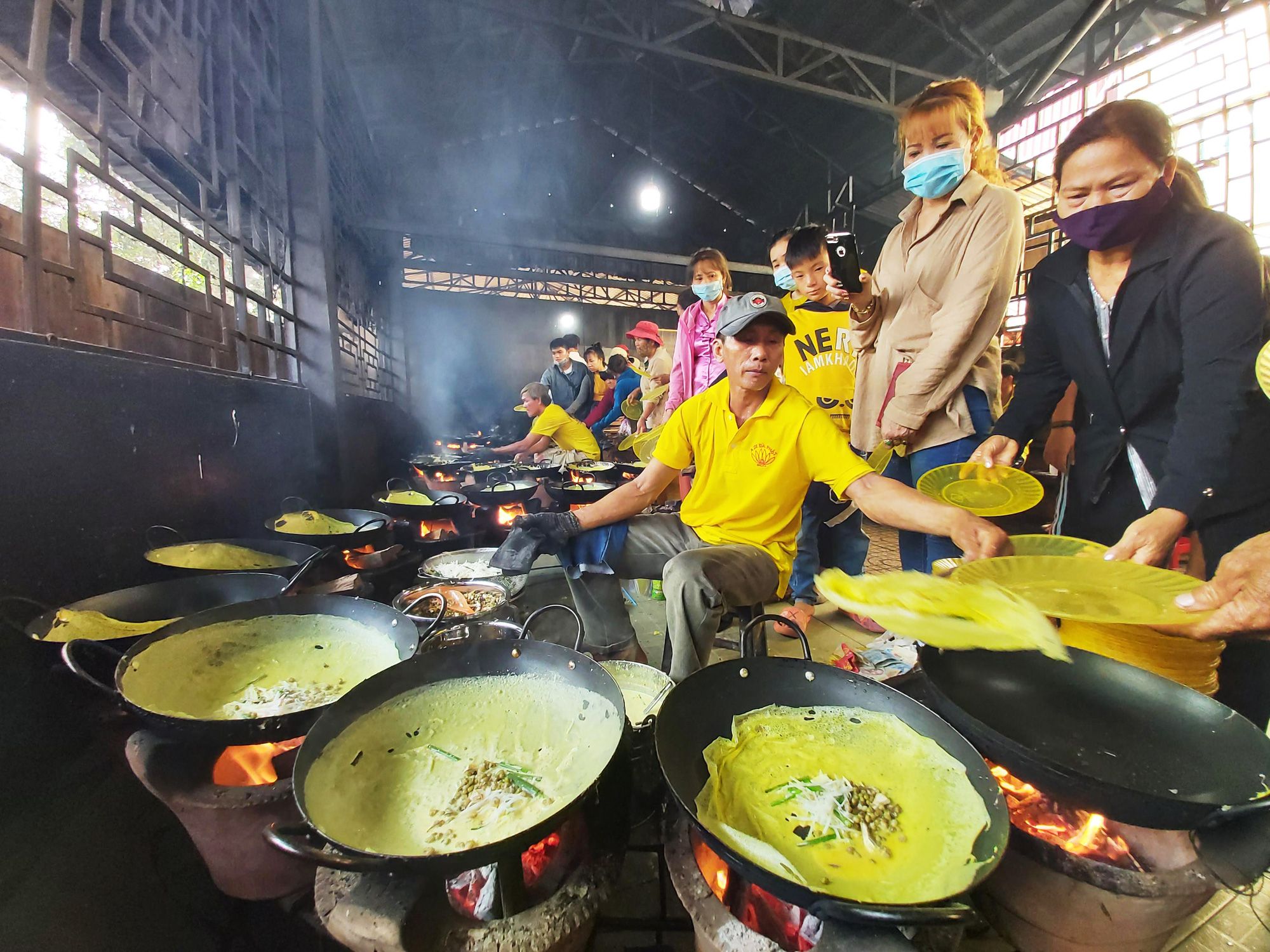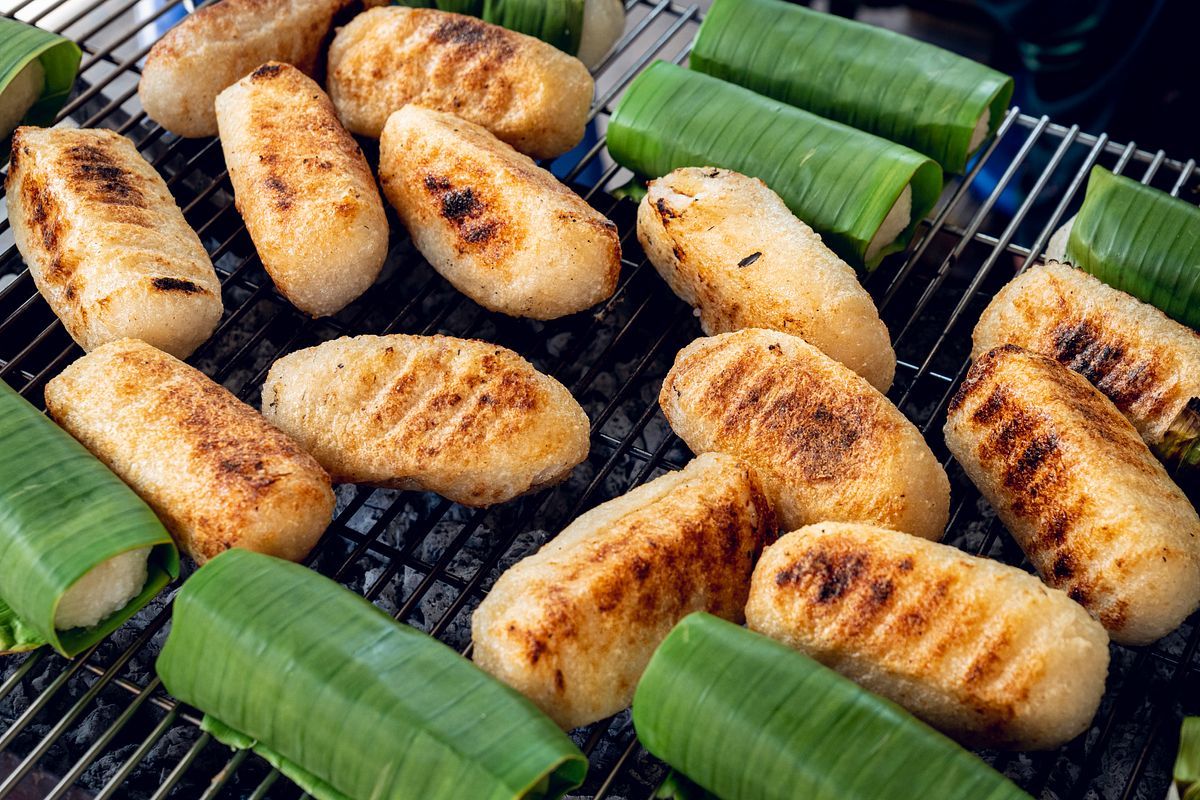Top 5 Vietnamese Dishes That Taste Better in the South
Some say Vietnam tastes different every hundred kilometers – and they’re right. The North is subtle, the Central fiery, but in the South, food smiles first. It’s sweeter, brighter, unashamedly generous, like the people.
If you’ve only had phở in Hanoi or bánh mì in Hội An, you haven’t really tasted Vietnam until you’ve eaten in Saigon. Here, every dish carries a little sunshine, a splash of coconut milk, and a freedom that belongs only to the South.
From the hum of early-morning noodle carts to the smoky late-night grills by the canal, these are five dishes that don’t just taste better in the South – they belong here.
Photo Credit: Asia Legend Travel
1. Cơm tấm Sài Gòn – comfort in broken grains
Once a humble meal for rice farmers, cơm tấm has become Saigon’s most beloved comfort food. The story starts with broken rice – tiny fragments left after milling. In the past, they were sold cheaply, a symbol of hardship. Today, those broken grains are gold.
The rice has texture: soft but not sticky, perfect for soaking up the rich, caramelized sauce of grilled pork chops. Add a fried egg, shredded pork skin, pickled vegetables, and a drizzle of sweet fish sauce, and you’ve got a plate that feels like a full conversation in flavor – salty, sweet, tangy, smoky, all at once.
But what really makes cơm tấm southern is its generosity. Portions are big, the flavors bolder, and no one measures how much mỡ hành (scallion oil) or fish sauce they pour. In the South, the rule is simple: feed people well, and feed them with joy.
Photo Credit: Xanh SM
Where to try it:
• Cơm Tấm Ba Ghiền (Phu Nhuan District) – a true Saigon institution, famous for its giant grilled pork chops and perfectly cooked broken rice. Always crowded, always worth it.
• Cơm Tấm Mộc (District 1) – modern but authentic, serving traditional flavors in a cleaner setting. The grilled ribs are slightly sweeter, and the presentation is elegant.
• Cơm Tấm Cali (multiple districts) – a more contemporary chain version, but reliable, with consistent flavor and generous portions. Great for travelers wanting an easy, quick taste of Saigon’s favorite meal.
2. Hủ tiếu Nam Vang – Phnom Penh roots, Saigon soul
Every bowl of hủ tiếu tells a migration story. It began in Cambodia’s Phnom Penh, came to Saigon with Chinese traders, and found its own identity in the South.
Clear yet flavorful, the broth is made from pork bones simmered for hours, sometimes touched with dried squid for extra depth. It’s sweet but balanced – the kind of sweetness that feels natural, not added. The noodles come soft or chewy, depending on your mood, and the toppings are a feast: shrimp, minced pork, quail eggs, garlic oil, and sometimes even liver for texture.
You’ll see people eating hủ tiếu at every hour of the day – from early dawn stalls near Chợ Lớn to late-night spots where motorbikes park nose to nose. What’s special about the southern version is that it lets you choose your own style: dry with sauce, soupy with broth, or mixed. The dish, like Saigon itself, never insists on one way of doing things.
Photo Credit: Báo Lao Động
Where to try it:
• Hủ Tiếu Thành Đạt (District 1) – a beloved 24-hour spot with both dry and soupy versions that hit the perfect balance of savory and sweet. Locals stop here after night shifts or before early flights.
• Hủ Tiếu Thanh Xuân (District 1) – over 70 years old and still serving from dawn till late. The old-school wooden stools, open kitchen, and fragrant steam make it a classic Saigon breakfast.
• Hủ Tiếu Liến Húa (District 3) – a cleaner, modern setting for those who want the traditional flavor without the street-side bustle.
3. Bánh xèo miền Tây – the golden sound of joy
Before you taste bánh xèo, you hear it. The “xèo” is the sizzle when rice batter hits a hot pan, a sound that signals happiness in Vietnamese homes. In the South, bánh xèo is larger, thinner, and crispier than its central counterpart, folded around shrimp, pork, and bean sprouts, often served with fresh herbs and lettuce leaves.
Each region has its own take, but the southern one stands out for two reasons: coconut milk in the batter and the way it’s eaten – as an event. You roll a piece of lettuce, add herbs, dip it into sweet fish sauce, and take a bite that crackles and cools all at once.
In the Mekong Delta, bánh xèo isn’t just food. It’s a celebration. Families gather around a single pan, everyone waiting for their turn to flip the next crepe. It’s loud, fun, and golden – like the South itself.
Photo Credit: aFamily
Where to try it:
• Bánh Xèo 46A Đinh Công Tráng (District 1) – a legend among locals and travelers alike. Famous for decades, this spot serves huge, crispy bánh xèo with juicy shrimp and pork, and a sauce that keeps you dipping.
• Bánh Xèo Ngọc Sơn (District 5) – a local favorite tucked in a busy street, known for perfectly thin, golden pancakes and generous fillings. Slightly smoky, slightly sweet, and absolutely satisfying.
• Bánh Xèo Bà Hai (District 4) – this spot is recommended in local round-ups for its traditional bánh xèo miền Tây flavour: large hot plates, shrimp & pork fillings, crispy golden batter, and a dipping sauce with just the right sweet-tang.
4. Bún mắm – a bowl of bold rivers
Bún mắm is not for the faint-hearted. Made from fermented fish broth, this noodle soup carries the soul of the Mekong in every whiff. The aroma is sharp, unmistakable – to some, shocking; to others, addictive.
Inside the bowl, the ingredients come alive: thick rice noodles, slices of catfish or snakehead, shrimp, roasted pork, eggplant, and herbs that cut through the richness. One spoonful, and you understand why locals call it the “river’s perfume.”
It’s a dish that divides first-timers and unites those who stay. In the South, flavor doesn’t apologize. It invites you to dive deep. And once you do, bún mắm rewards you with a complexity that no other soup can match – savory, sweet, and wild, like the delta it was born from.
Photo Credit: Lê Travel
Where to try it:
• Bún Mắm 444 (Binh Thanh District) – one of Saigon’s most famous names for this dish. The broth is clean but still deeply flavorful, and the toppings are generous. Great for first-timers who want to ease into the world of fermented flavors.
• Bún Mắm Cô Ba (District 10) – homestyle and hearty. Expect a rich, thick broth, plump shrimp, and crispy pork belly. Locals love it for the balance between authentic Mekong flavor and comfortable city dining.
• Bún Mắm Cô Năm (District 10) – a smaller spot near the city center, often missed by tourists but beloved by regulars. It’s cozy, simple, and the kind of place where the auntie remembers your order on the second visit.
5. Chuối nếp nướng – sweetness wrapped in smoke
If you walk past a street corner and smell grilled banana leaves and coconut milk, follow your nose. You’re about to meet chuối nếp nướng – grilled sticky rice banana.
It’s deceptively simple: a ripe banana wrapped in sticky rice, grilled until the rice turns golden and slightly crisp, then served with warm coconut cream and roasted peanuts. But beneath that simplicity lies one of Vietnam’s greatest desserts – smoky, creamy, chewy, and comforting.
The sweetness here is never heavy. It’s nostalgic. It tastes like home, even if you didn’t grow up here. And nowhere does it better than in the South, where street vendors fan charcoal fires at dusk and each bite feels like a quiet ending to a noisy day.
Photo Credit: Saigoneer
Where to try it:
• Chuối Nếp Nướng Võ Văn Tần (District 3) – a popular street-stall spot loved for its warm portions, perfect banana ripeness and rich coconut topping.
• Chuối Nếp Nướng Út Lúa (District 3) – famous for both its grilled banana and the chè chuối nướng (banana-in-coconut soup). The balance of smoky and creamy makes it a city legend.
• Chuối Nếp Nướng Trần Đình Xu (District 1) – classic street-side flavor, charcoal smoke wafting through the air, usually a long line in the afternoon.
Eating Your Way Through the South
More than flavor: the Southern way of eating
There’s a rhythm to southern eating that goes beyond the dishes. Meals are social, not scheduled. Street food stalls double as meeting points. People laugh loudly, talk over each other, and share bites across the table. Food here isn’t just nourishment – it’s a way to connect, to slow down, to share warmth.
If the North refines and the Central challenges, the South welcomes. That’s why these dishes taste different here: because they’re served with a kind of kindness you can taste.
When you’re here
If you’re staying in Saigon, don’t rush your meals. Try one dish each day. Eat where the locals do – under awnings, next to parked bikes, beside a fan that hums too loud. Talk to the cook. Watch how they plate, pour, and smile.
And when the city heat starts to slow you down, KiN Hotel’s team can point you toward trusted local favorites, from hidden hủ tiếu stalls to the best late-night cơm tấm. Because tasting the South isn’t about checking boxes – it’s about finding your own flavor of joy.
🛎️ Book your stay with KiN Hotel
Love discovering places like this? We share even more hidden corners, cafes, and city gems over at @kinhotel. Follow us on Instagram and TikTok for your daily dose of Saigon charm.






